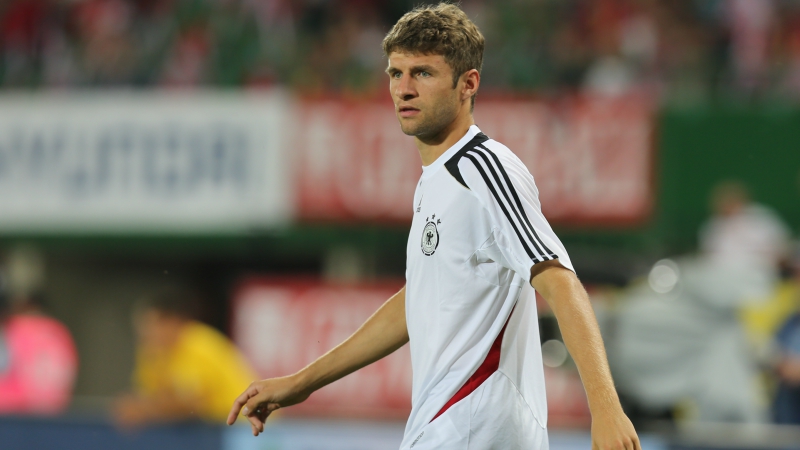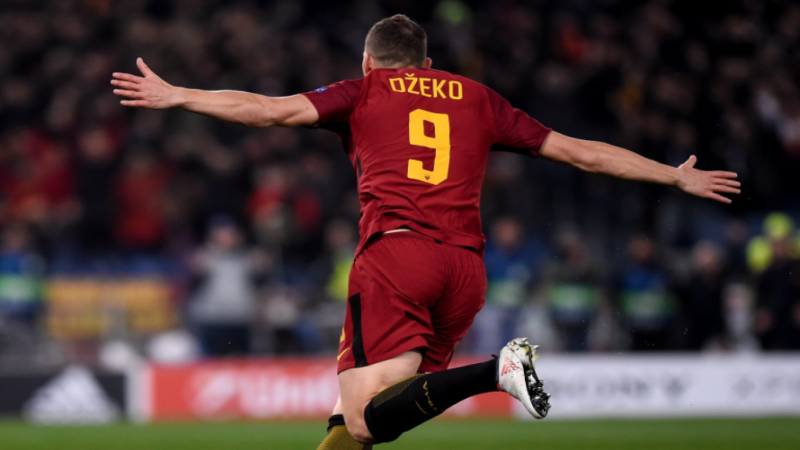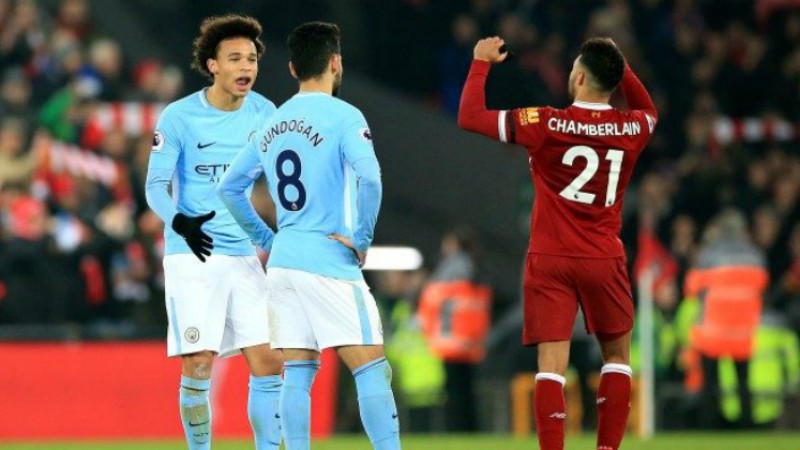World Cup Watch: International Break Storylines for England, Spain and Germany
Michael Kranewitter: Own Work
Sign up for The Action Network’s daily newsletter to have the best sports betting insight and analysis delivered to your inbox.
The World Cup is less than 100 days away. With only a few friendlies before the tournament kicks off, many contenders will be looking to iron out the details of how they’re going to approach the competition.
For some, that means simple positional battles, while others must answer lingering questions about which formations and tactics will get the most out of imperfect sets of players.
Here are some storylines to track over the next two weeks in this international break as managers make their final preparations for the summer’s main event.
England’s Midfield
The Three Lions have a potent attacking mix that's chock full of dynamic scoring and creative options. Harry Kane (who is currently injured but is expected to return well before the start of the World Cup) leads the line. His Tottenham Hotspur running mate Dele Alli will likely slot in behind him, as is the case in the EPL.
Raheem Sterling has nailed down one flank on the wing, while manager Gareth Southgate has an embarrassment of riches to consider on the other side. Marcus Rashford, Alex Oxlade-Chamberlain, Jesse Lingard and Adam Lallana are interesting options who all bring something slightly different to the table.
The outlook is less certain elsewhere in England's lineup. Eric Dier anchors Tottenham’s midfield, and he could do the same for the national team. But with significant questions surrounding England's defensive line, it’s possible that Dier could be pressed into service in the middle of that unit. The crop of English central defenders for these friendlies is a somewhat motley crew of players who are having good seasons for mid-table (or lower) clubs but are relatively untested at the highest international level. Harry Maguire of Leicester City, Alfie Mawson of Swansea and James Tarkowski of Burnley might all be ready to be the backbone of England’s defense, but they have an awful lot to prove.
A midfield with Dier at its base would give England some solid options. The most traditional would be a 4-2-3-1 pairing Dier with a more progressive partner.
The question becomes one mainly of who that partner would be. Liverpool’s Jordan Henderson would be the obvious first choice. He’s spent the last two seasons under Jurgen Klopp as the linchpin of a very aggressive midfield, so more responsibility for progressing the ball during periods of settled possession might be a slightly awkward fit. It would risk leaving England a little bereft of creativity in transition.
Another option would be Arsenal’s Jack Wilshere. Wilshere’s injury history and incredibly uneven form over the years make him a risky choice. But at his best he offers a balance of passing and movement that complement Dier nicely.
Alternatively, England could opt for a more aggressive approach with a three-man midfield. That would mean playing Alli as the most aggressive part of a trio with Dier (or Henderson) at the base and possibly inserting an additional attacking player. A lineup that includes both Lallana and Alli in the midfield ahead of a single pivot could cause even strong defenses fits, though it also risks leaving those questionable defenders badly exposed.
Then there’s always the possibility, grim as it may be, that England will try to build a defense-first midfield and rely solely on its attackers to break open games with very little help. For example, a three-man midfield with Dier, Henderson and somebody like Jake Livermore — which would move Alli out to the wing — might seem like an appealing way to shut down opponents.
The friendlies against the Netherlands (Friday, 3:45 p.m. ET) and Italy (March 27, 3 p.m. ET) will give Southgate lots of time to experiment, and they'll hopefully provide some clues about the midfield he’ll use in the World Cup. Not only will that determine how England will play, but it will go a long way toward determining how fun the nation will be to watch.
Will England lean on a talented attack and play open, entertaining soccer, or will it opt for a defensive setup that depends on attackers to do heavy lifting without much support?
Spain’s New Generation
For a decade, Spain’s strength was its consistency. The same core group of players won the 2008 Euros, the 2010 World Cup and the 2012 Euros. Then the nation flamed out dramatically in the group stages of the 2014 World Cup. The 2016 Euros were an awkward in-between moment, with old coach Vicente Del Bosque trying to shoehorn new players into the ghost-shape holes the previous generation left. It ended with a quarterfinal defeat to Italy. So did Del Bosque’s tenure with Spain, as he was replaced by Julen Lopetegui.
This World Cup squad is going to look very different than the one that came before it. Xavi and Xabi Alonso are gone. So are Fernando Torres and David Villa. Players like Cesc Fabregas, Juan Mata and Santi Cazorla, who have provided depth over the years, haven’t played a minute of World Cup qualifying. This isn’t your slightly older brother's Spain.
That said, three very important pieces remain. One, Sergio Busquets, is injured and won’t be with the squad. But given that he played every minute of the nine Spanish qualifiers that matter, it seems likely that he’s going to be a mainstay of Spain's World Cup roster.
The other two are slightly more interesting. David Silva started every game and tied for the team lead with five goals during qualifiers. He’s also 32 and has played a heavy load for Manchester City this year. Andres Iniesta played slightly less often for Spain, starting six games. He’ll also be 34 by the time the tournament starts.
Silva is still clearly at the height of his powers, but father time is starting to take a toll on Iniesta. Plus, the potential of playing seven games over the short period of a major tournament is a big ask. Also, Spain is ridiculously stacked in the midfield, with Thiago, Isco and Koke waiting in the wings.
Isco was largely a super sub during qualifying, starting four games and making four substitute appearances, while both Koke and Thiago played as much or more than Iniesta, starting six and seven games, respectively, and playing 564 and 548 minutes to Iniesta’s 489.
Spain’s success depends on balancing this embarrassment of riches. To some degree that means doing what they’ve always done, and figuring out how to cram as many creative midfielders on the field at the same time as possible. And, to that end, all of Spain’s talented midfielders, except perhaps Thiago, have spent various amounts of time over their careers as unconventional wingers.
But it will also be crucial for Lopetegui to not be too deferential to the older stars. Spain’s strength has always been in the midfield. In the past, that meant the stars everybody knew played every game and dominated the ball. Now, the best approach is mixing and matching between a half-dozen talented players. As Spain prepares for the World Cup, it will be important to see if Lopetegui gives the younger guard as much influence on the team as they deserve. With two friendlies coming up against megawatt opponents in Germany (Friday, 3:45 p.m. ET) and Argentina (March 27, 3:30 ET), it will be interesting to see how beholden the Spanish manager feels to his aging stars.
The German Tactical Mystery
If Spain’s long-term success stems from playing a predictable style and doing it better than anybody else, Germany’s comes from being the masters of tactical flexibility.
It won the World Cup four years ago utilizing a handful of different styles. Germany played much of the tournament without a true striker, surrounding the versatile Thomas Muller (pictured above), who filled the role at times, with small, flexible attackers like Mario Goetze, Toni Kroos and Mesut Ozil. Then, the national team started a traditionalist striker’s striker, Miroslav Klose, up top in the final. Superstar fullback and all-around general soccer genius Philipp Lahm spent the group stage in the midfield before moving to the defensive line. Germany was lethal, but mercurial.
Nothing has changed since. Well, except for some of the players. Klose, Lahm and Bastian Schweinsteiger, all longtime German stalwarts, are gone. But the flexibility remains. Young star Joshua Kimmich was the only German player to start every qualifying match, mostly at right back, but he can play almost anywhere on defense or in the midfield as needed. The ever-present Muller started nine games, though he, like Kimmich, can play a number of positions on the attacking line, on the wing or even deeper in the midfield. Beyond that, defensemen Mats Hummels and Jonas Hector started eight. Aside from those four, only Kroos in the midfield broke the 600-minute mark during qualifying.
Germany's goal scoring is equally diverse. Muller has five, as does Sandro Wagner (in only three games). After that, four players have three, and five players have scored two goals. The Germans once again look poised to be a flexible, high-powered team that will be able to score a lot of goals in a number of different ways.
One interesting thing about the upcoming friendlies is that they appear to be a battle of exactly which goal scorers will get the opportunity to go to Russia. In addition to Muller and Wagner, Timo Werner, Mario Gomez and Lars Stindl have all been called into camp. For a team that values flexibility, that’s a lot of players who are primarily strikers. Muller is versatile, and Stindl is a good passer and can play other positions as part of a unit, but Wagner, Werner and Gomez are all pretty pure strikers.
It’s possible that Germany is going to be testing out more striker-heavy formations and tactics when it faces Spain and Brazil. Or, it’s conceivable that these matches are simply going to serve as a convenient opportunity to see which strikers will round out the German squad. Either way, manager Joachim Low will be starting to fine-tune the World Cup squad.
Top Photo Credit: Michael Kranewitter – Own Work
How would you rate this article?






